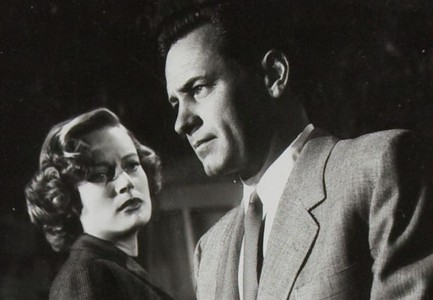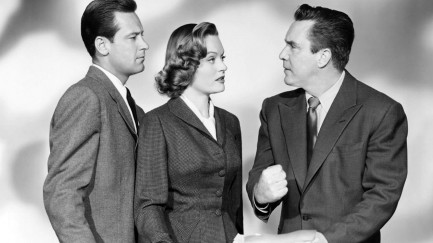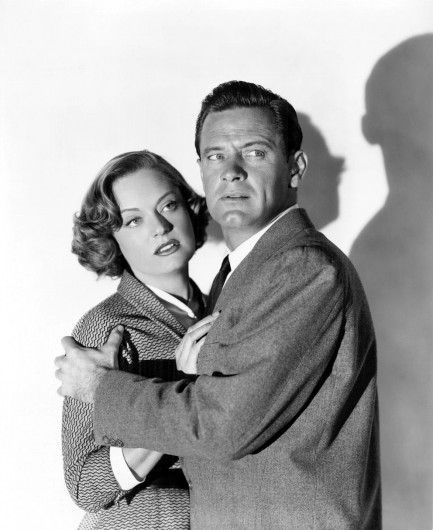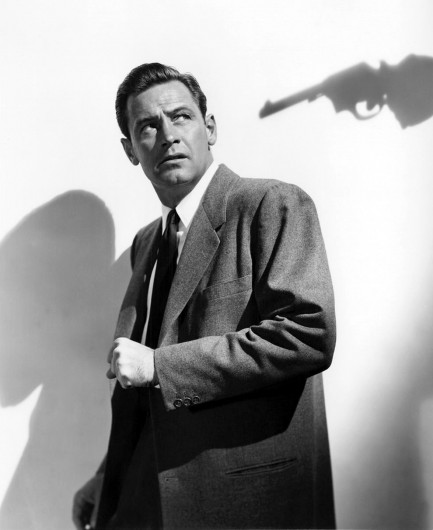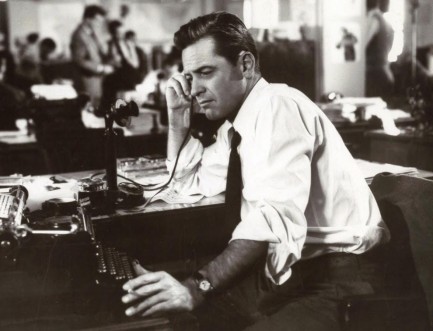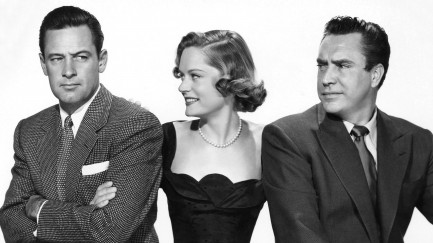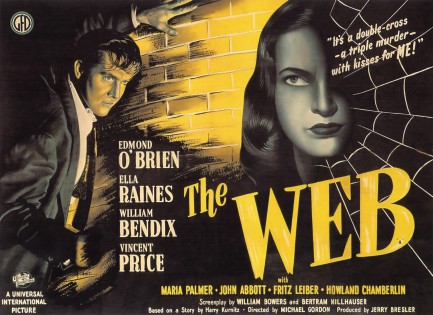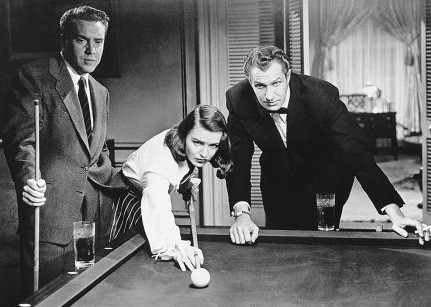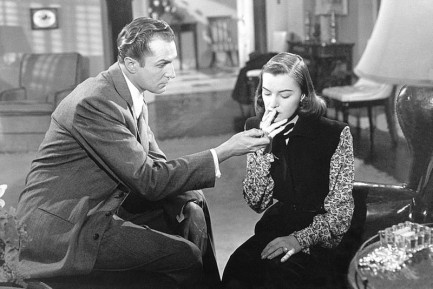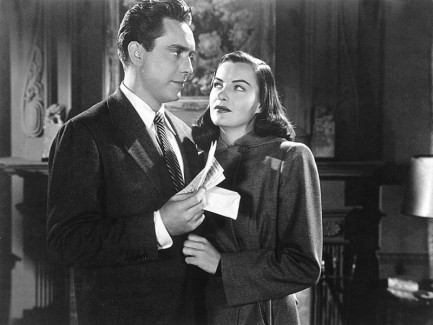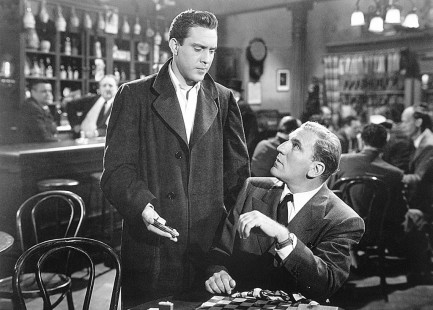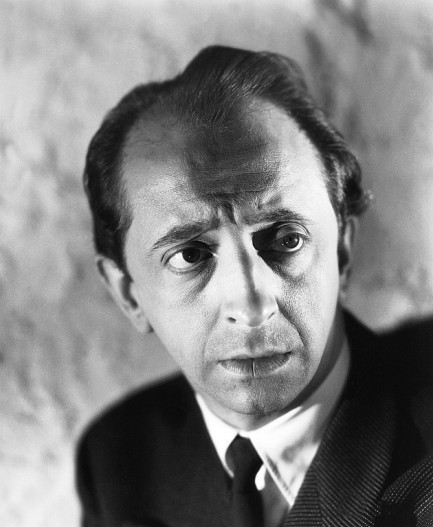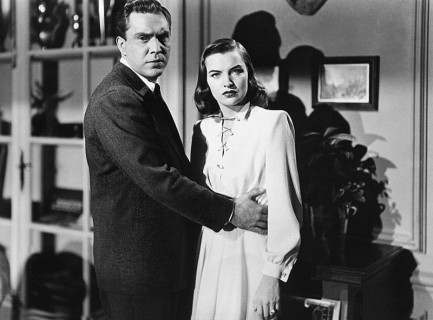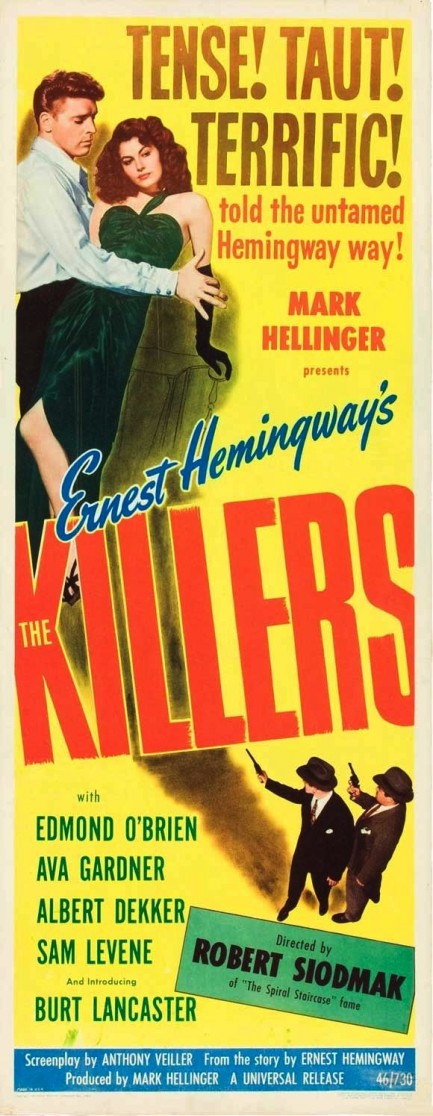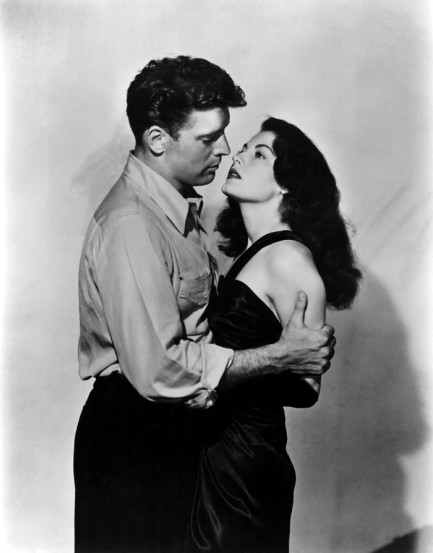 Come along and ride on a Fantastic Voyage. 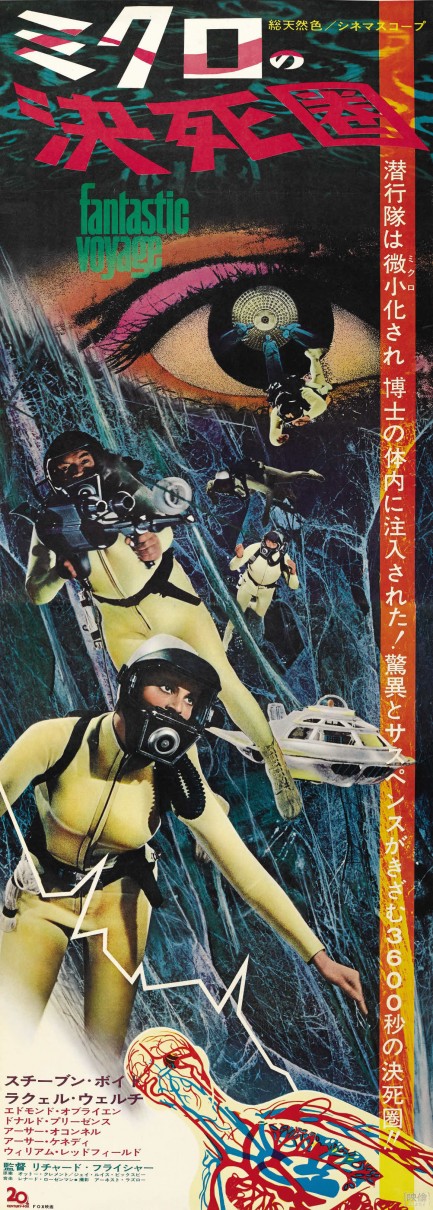
There's something about sci-fi movies from the late 1960s that makes them so pleasing to watch. The source material was innovative and ambitious thanks to a crop of fresh new sci-fi novelists, while cinematically, capabilities in special effects, a trend toward elaborate sets, and bold color thanks to improved film processing techniques resulted in more believable and engaging final products. Fantastic Voyage, for which you see a beautiful Japanese poster above, benefits from all those elements. We queued it up and watched it straight through, impervious to distraction, marveling at the visionary look of it and its fun story of a team of doctors and scientists reduced to microscopic size and injected into a man's circulatory system to find and remove a blood clot deep in his brain. Thanks to its provenance as a novel by Isaac Asimov it's just scientifically convincing enough—once you accept the idea of a shrink ray—to aid suspension of disbelief. A good popcorn muncher, this one, with a great cast that includes Raquel Welch, film noir legend Edmond O'Brien, and Donald Pleasence. Highly recommended. Fantastic Voyage opened in the U.S. in August 1966 and reached Japan today the same year. 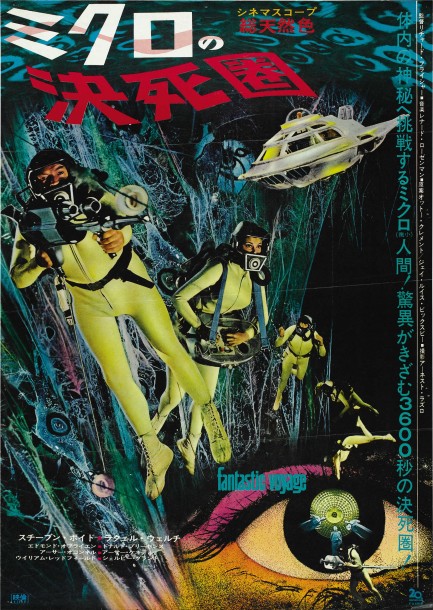 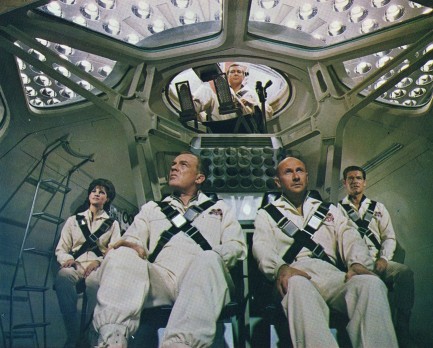 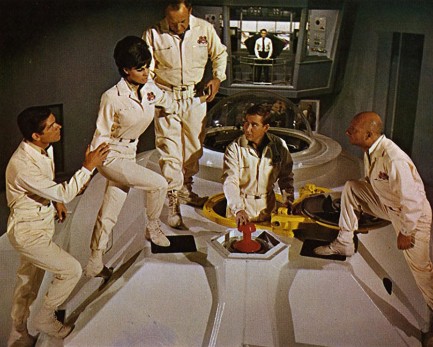 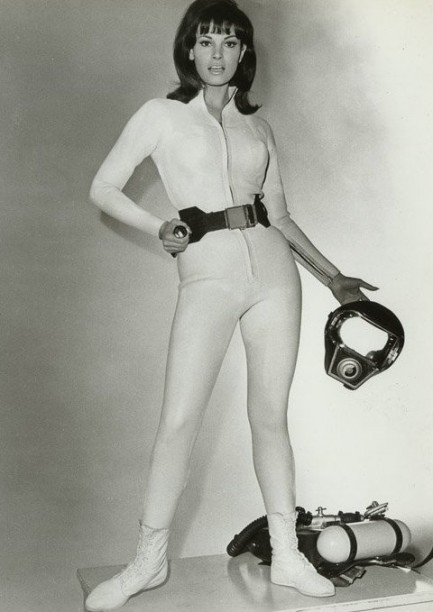 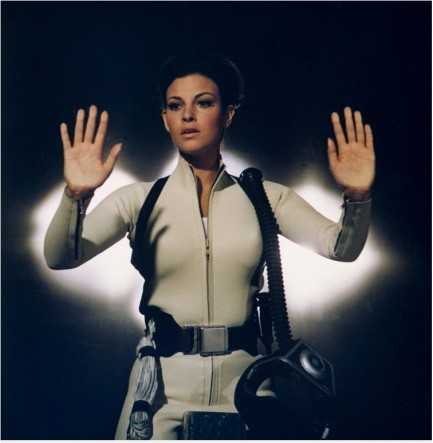 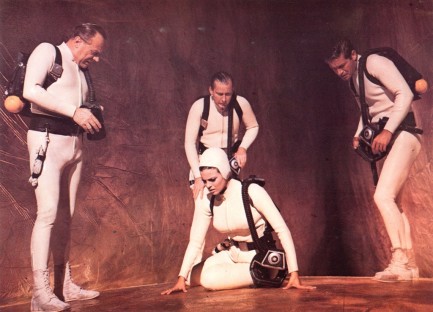 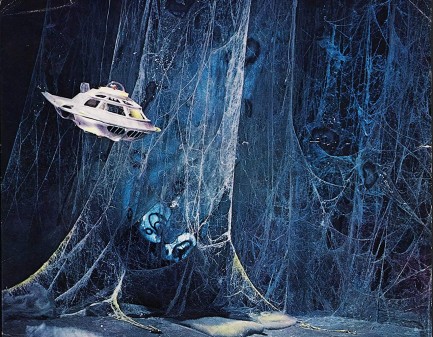 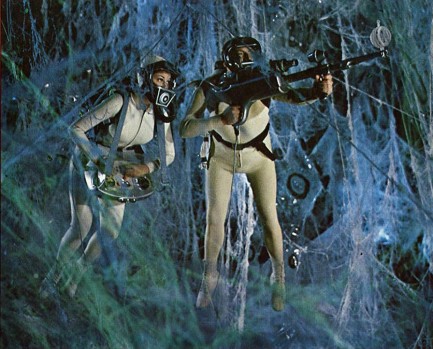 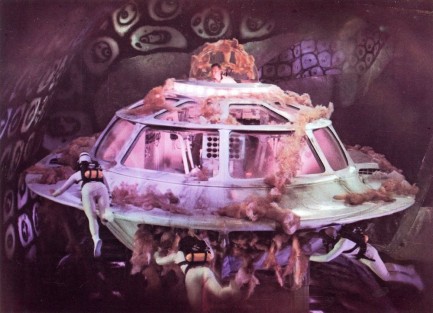   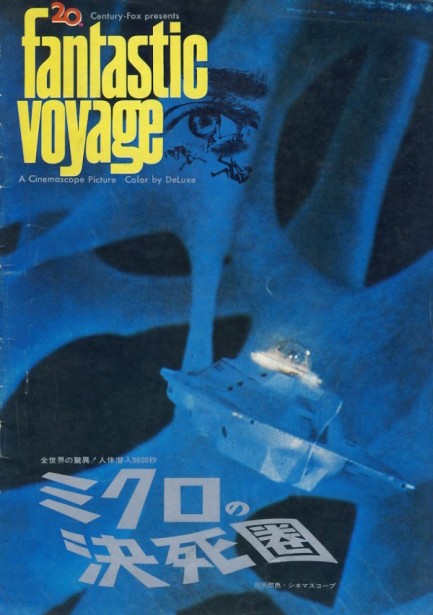  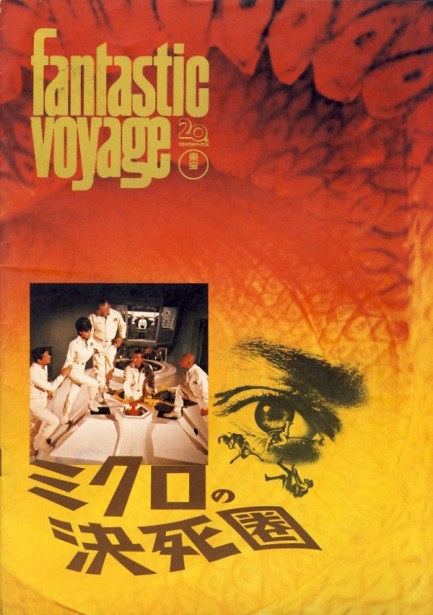 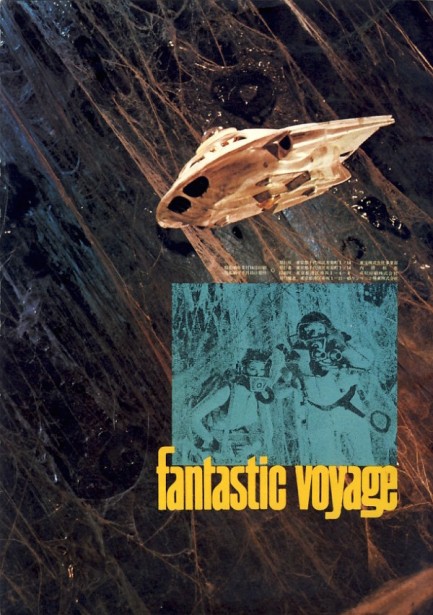
 Edmond O'Brien tries to shield himself from the truth. 
A cop runs across cash at crime scenes quite a bit. Maybe he snags a little here, a little there. Takes the girlfriend to dinner, buys himself a new fishing rod. He gets used to these little bonuses. Then one day there's $25,000 and nobody around to see him take it. Shield for Murder is the story of a dirty cop played by Edmond O'Brien whose theft of said cash leads to him finally becoming suspected of wrongdoing, which in turn causes him to be hunted by the original possessors of the cash, as well as investigated by his protégé. As the vise tightens O'Brien gets more desperate, and more dangerous. Redemption is never an option, but survival might be—with luck. O'Brien is good in every film role, so what you get here is a solid genre entry, enlivened by a drawn out action climax and a shootout at a public pool that's among the best throwdowns to be found in vintage cinema. Marla English co-stars, which helps plenty. Plus check O'Brien's crazy eyes in the production photos below. He gives this role his all. Shield for Murder premiered in the U.S. today in 1954. 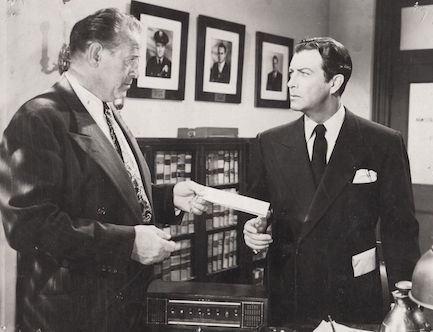 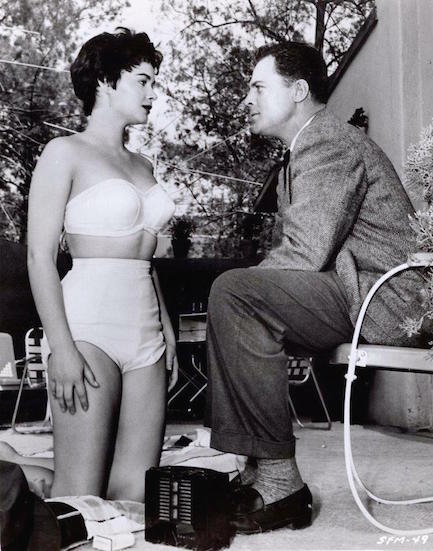 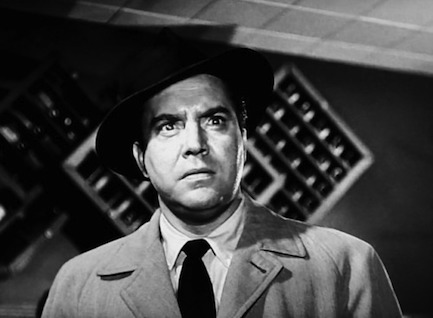 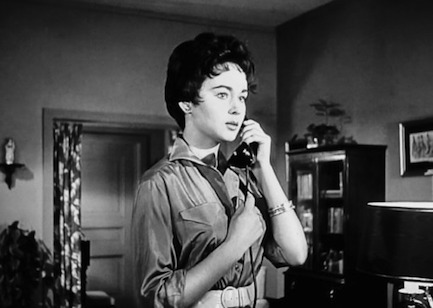 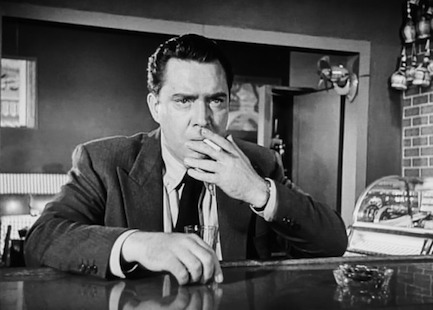 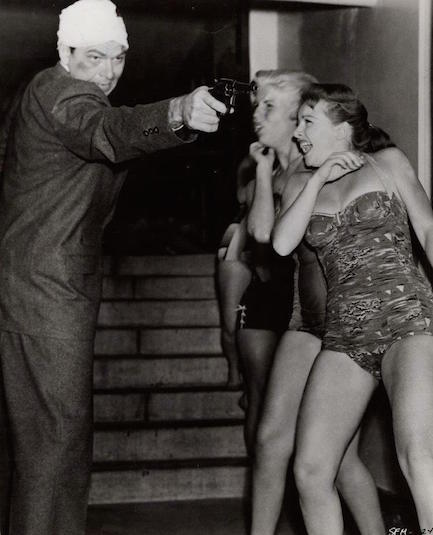 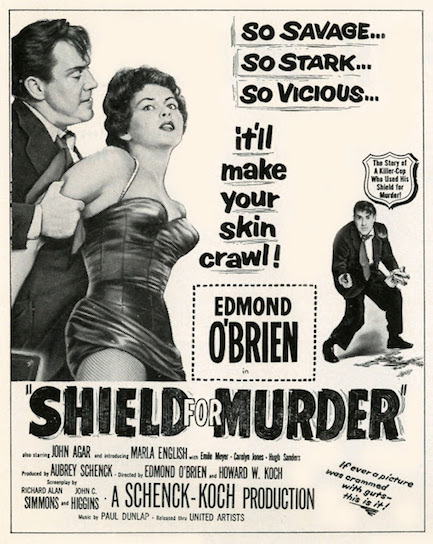
 Organized crime finally meets its match. 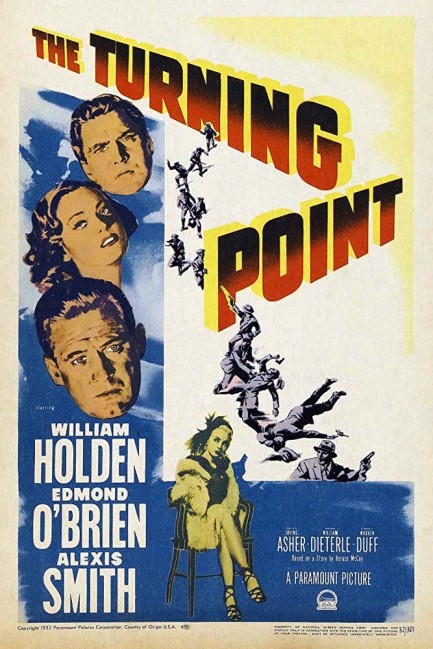
How much does it cost to fight corruption? That's the question The Turning Point asks, and the answer is—everything. Fighting corruption costs relationships, trust, and often lives. It costs reputations, stability, and sometimes public belief in civil institutions, because corruption will destroy everything before being pushed from power—even the structures that made its rise possible in the first place. Edmond O'Brien, William Holden, and Alexis Smith star in this second night offering at the Noir City Film Festival that examines the lives of a prosecutor, his assistant, and a newspaperman, all of whom are drawn into an investigation of organized crime that is far tougher than any of them expected. And they thought they expected the worst.
The investigative body portrayed is presumably modeled after 1950-51's anti-crime Kefauver Committee, aka the United States Senate Special Committee to Investigate Crime in Interstate Commerce, which revealed to the general public that a national organized crime syndicate—popularly known as the Mafia—existed. Before the Committee the idea of the Mafia was mocked by many as a conspiracy theory, but the Committee's conclusions led to the creation of the RICO Act, which today is one of the most useful tools in the federal arsenal for combatting organized crime. The investigation in The Turning Point is on a smaller scale, focusing on a single city, but the idea is the same.
The crooks, of course, don't just stand idly by while they're being targeted by the authorities. Their retaliation comes on multiple fronts and pushes O'Brien, who heads the crime committee, to the point of quitting. But we know he won't. What kind of movie would that be? Does he win? In film noir victory is never a foregone conclusion. Tragedy of some sort is almost assured. But if it indeed strikes, who will fall? Therein lies the tension in The Turning Point. With O'Brien, Holden, and Smith in the leads, the movie is in the hands of confident performers, and what could have been mere pro-law enforcement propaganda turns out to be something more nuanced. Is it a top effort? Not quite, but if you watch it you definitely won't be wasting your time.
 Do you, Edmund, take this woman to be—and stop me if you've heard this before—your lawful wedded wife? 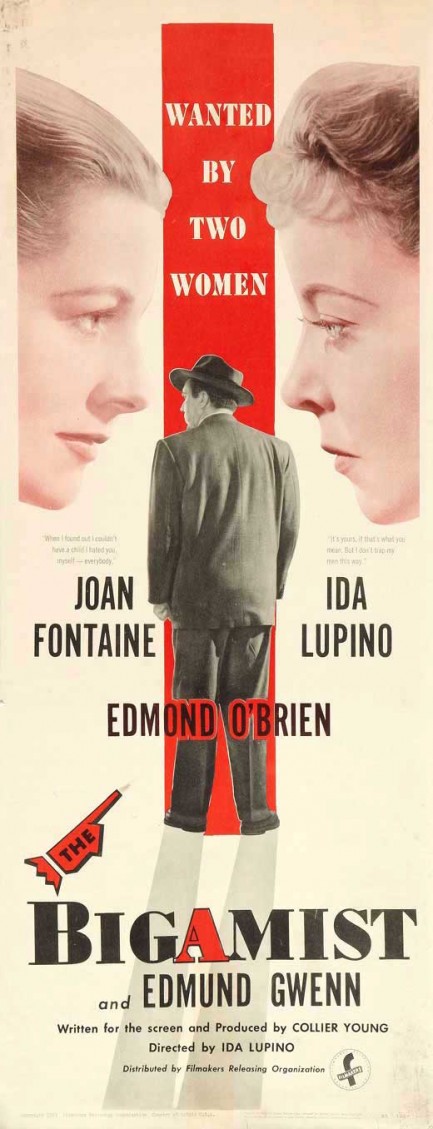
The title of The Bigamist may seem to give the plot of the film away, but the point of this once-neglected-now-rediscovered drama is not the revelation of bigamy, but rather the details of how a man ends up with two wives. Edmond O'Brien plays a successful traveling salesman married to lovely Joan Fontaine, and their lives in San Francisco seem pretty good, despite all the time O'Brien spends away on sales trips. When they decide to adopt a child the agency's investigation uncovers O'Brien's other wife Ida Lupino in Los Angeles, and an entire domestic existence with her. Oh what a tangled web.
From that point forward The Bigamist is O'Brien's mea culpa to the insurance agent who busted him. This movie pops up a lot on television but not because it's great—because it's in the public domain, and because people are interested in the output of Lupino as a director. Yes, she helmed this one and did so with style, turning what was probably destined to be a forgettable melodrama into a quasi film noir. In the end the movie still isn't great, but it's a lot better than it should be thanks to Lupino. The Bigamist premiered in the U.S. today in 1953. 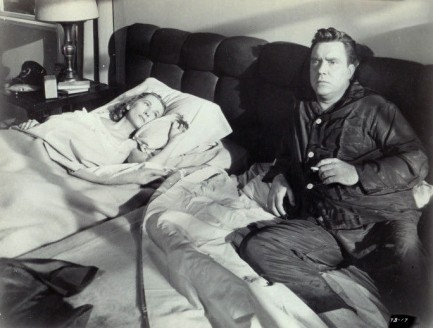 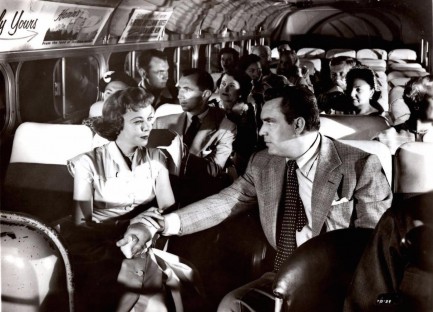 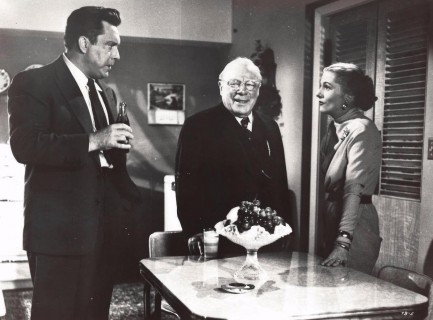 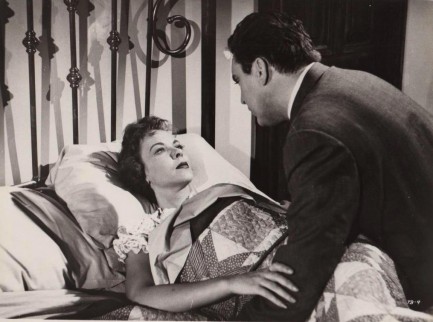
 Was it self-defense or murder? That’s always the question. 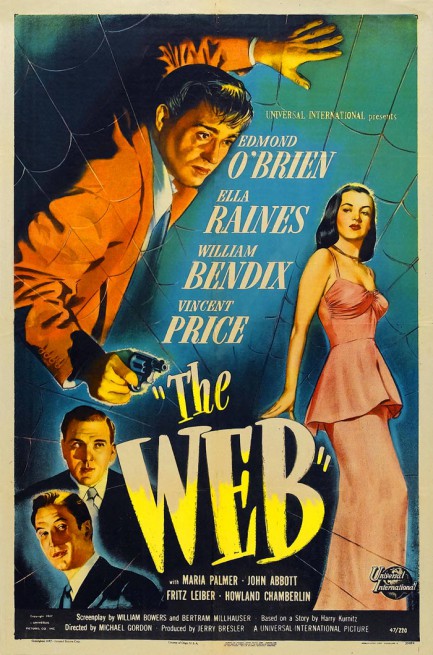
Do embezzlers even exist anymore, or is all that legal now? That’s the first question we had about The Web. The second was whether it’s believable for a lawyer to accept a gig moonlighting as a bodyguard for a wealthy and arrogant businessman. Well, maybe, if he wants mainly to get close to his new employer’s hot secretary Ella Raines. And his plan seems to be working, too, but just when things are heating up between them he has to shift into bodyguard mode and ends up killing an intruder bent on ventilating the businessman. But was the shooting legit or was it all a set-up to eliminate a rival? The lawyer starts to have suspicions when the dead man’s daughter appears and accuses him of being a hired murderer. From her perspective, what else could he appear to be? Raines, Edmond O’Brien, William Bendix, Vincent Price, John Abbott, and Maria Palmer do tolerable work here, but director Michael Gordon hits a few snags. For example, he shoots a restaurant scene between O’Brien and Bendix on two different sets and splices the halves together. Did one set burn down? Did the budget not include provisions for continuity? You can spot that gaffe at about 45:00. There are others. If you don’t mind such details there’s enjoyment to be had here, but if you like technical proficiency in your cinema, perhaps steer clear. The Web premiered in the U.S. today in 1947.
 In film noir crime is always the road to ruin. 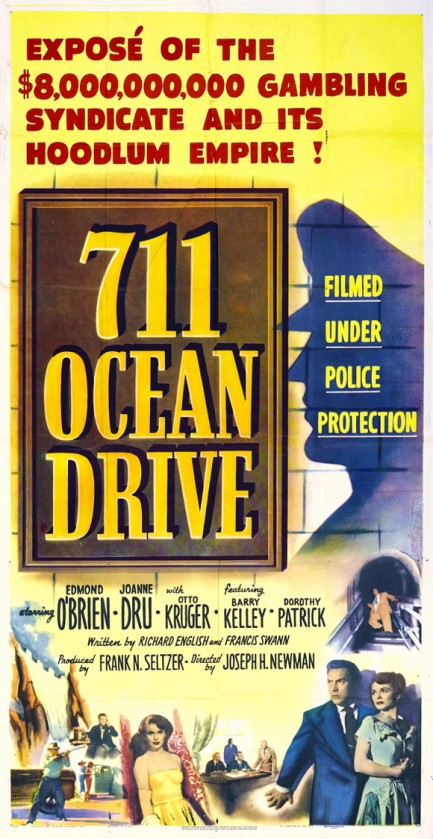
Looking at the promo poster for 711 Ocean Drive you'll notice that it claims to have been filmed under police protection. Apparently organized crime interests were so incensed by the movie they tried to quash its production. We seriously doubt this is true, but a little white lie in service of cinematic thrills never hurt anyone, we guess. The movie stars Edmond O'Brien in the story of an L.A. telephone worker who uses his genius for electronics to rise to the pinnacle of the illegal bookmaking racket. Once on top he comes to the attention of east coast operators, who move in on his set-up, cut him in for half, but promptly cheat him of his percentage. He won't accept that, but his solution to the problem leads to more trouble. We won't go into detail, but since the story is narrated by an FBI agent you know from the opening moments that O'Brien loses. The only question is how badly. The film would be better without the voiceover, but we suppose audiences of the day needed that good ole crime-doesn't-pay lesson hammered home. Since real life doesn't provide it, at least escapist cinema can. One aspect of the movie that pleasantly surprised us, though, was O'Brien's plan to retire to Guatemala. It isn't often that mention of our former home pops up in an old flick. Audiences must have thought the scheme was ridiculous, but seventy years ago Guatemala must have been one of the garden spots of the world. Certain parts are still lovely even today. Too bad O'Brien never makes it. 711 Ocean Drive premiered today in 1950. 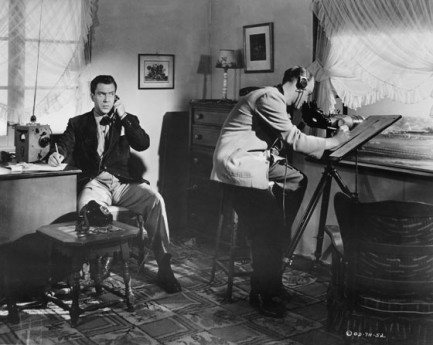 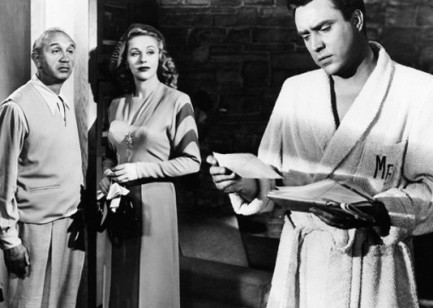 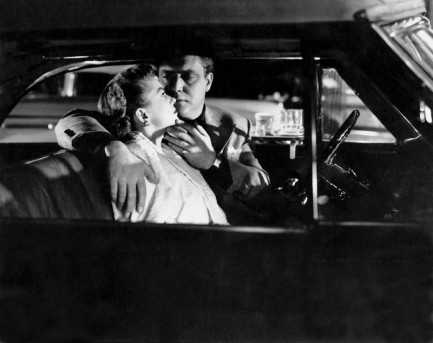 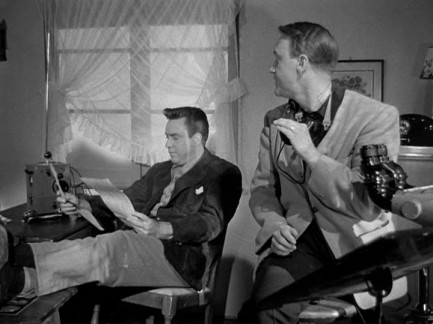 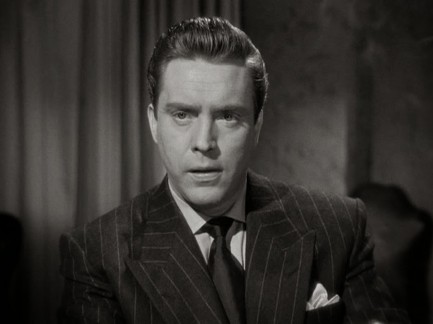 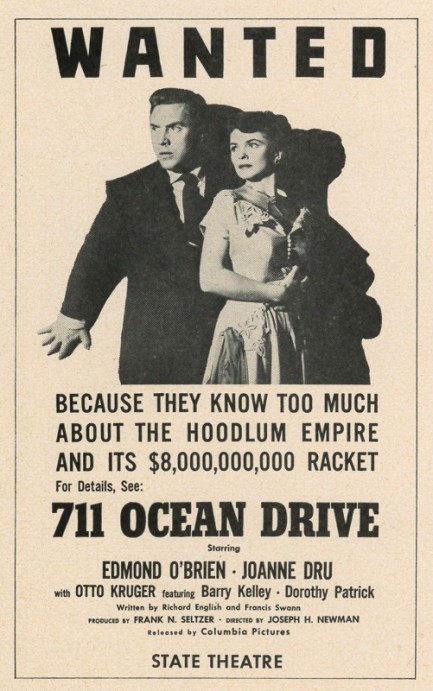
|
 |

The headlines that mattered yesteryear.
2003—Hope Dies
Film legend Bob Hope dies of pneumonia two months after celebrating his 100th birthday. 1945—Churchill Given the Sack
In spite of admiring Winston Churchill as a great wartime leader, Britons elect
Clement Attlee the nation's new prime minister in a sweeping victory for the Labour Party over the Conservatives. 1952—Evita Peron Dies
Eva Duarte de Peron, aka Evita, wife of the president of the Argentine Republic, dies from cancer at age 33. Evita had brought the working classes into a position of political power never witnessed before, but was hated by the nation's powerful military class. She is lain to rest in Milan, Italy in a secret grave under a nun's name, but is eventually returned to Argentina for reburial beside her husband in 1974. 1943—Mussolini Calls It Quits
Italian dictator Benito Mussolini steps down as head of the armed forces and the government. It soon becomes clear that Il Duce did not relinquish power voluntarily, but was forced to resign after former Fascist colleagues turned against him. He is later installed by Germany as leader of the Italian Social Republic in the north of the country, but is killed by partisans in 1945.
|

|
|

It's easy. We have an uploader that makes it a snap. Use it to submit your art, text, header, and subhead. Your post can be funny, serious, or anything in between, as long as it's vintage pulp. You'll get a byline and experience the fleeting pride of free authorship. We'll edit your post for typos, but the rest is up to you. Click here to give us your best shot.

|
|




























